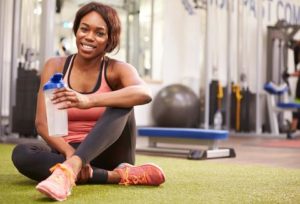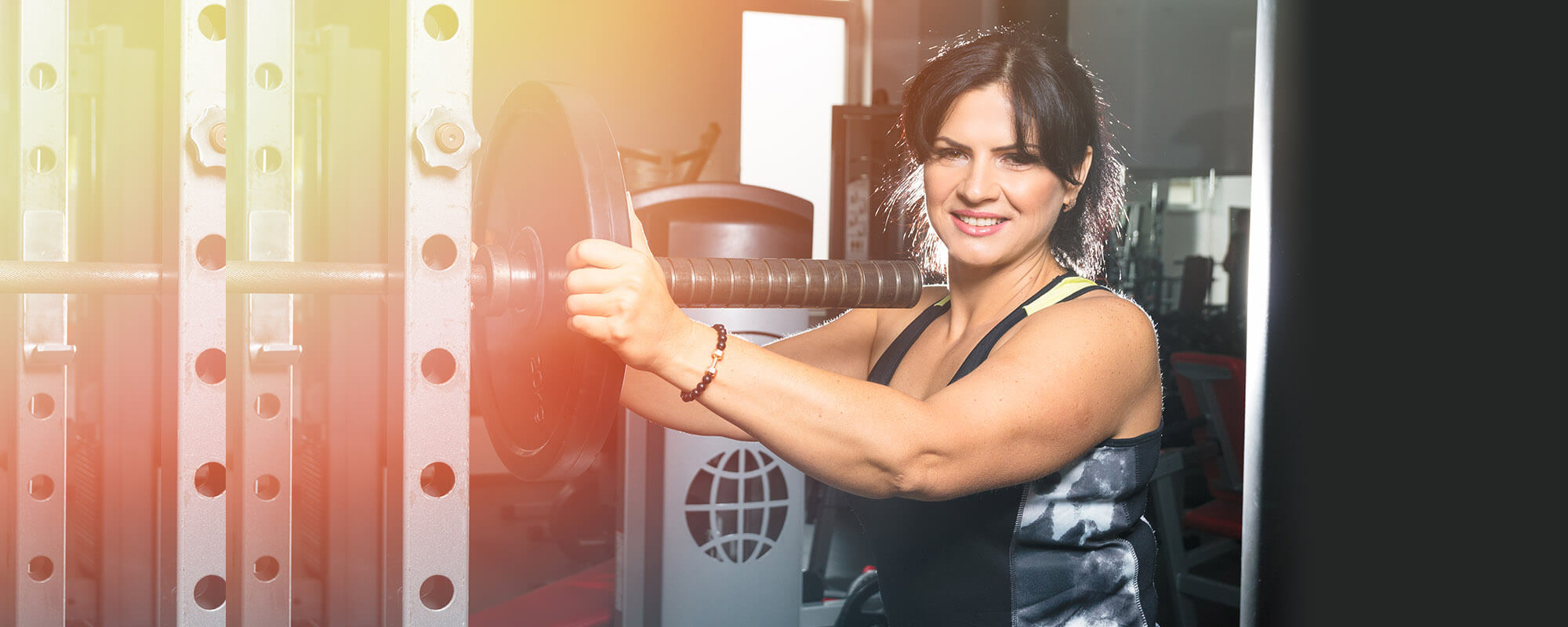The ketogenic diet is a low-carbohydrate diet that restricts carbs to the point that the body goes into prime fat-burning mode and you begin to lose fat from your body. In fact, research has shown that the ketogenic diet is so good at helping the body burn fat that you can experience body-fat loss without workout out. However, that doesn’t mean exercise can’t accelerate your results, reap additional health benefits, build muscle, or help you achieve other goals besides shedding fat. Moving your body is important to your overall health, and adding exercise to your ketogenic lifestyle can lead to even more drastic health improvements. But the question is, what type of exercise is best on a keto diet?
Understanding the Exercise Types
There are many different types of exercise, each of which impacts the body a little differently and relies on different energy systems. The two primary categories of exercise we’ll discuss in this article are resistance training and endurance training since these types of exercises are most impacted by working out while in ketosis.
Each of these exercise types can be further broken down as follows:
Resistance Training (anaerobic training)
- Strength Training: training with the primary goal of improving strength. While all resistance training can improve strength to some degree, strength training is exercising in a way that maximizes increases in strength. Bench presses, deadlifts, and squats are great examples of strength training.
- Hypertrophy Training: a type of exercise that’s focused on muscle growth. Differences between hypertrophy training and strength training include weight lifting and other exercises with different repetition ranges, different rest times, and different training volumes. For hypertrophy training, rep ranges are between 8 to 12 with a lower weight, greater rest time, and a higher training volume than strength training.
- Power Training: a type of training that focuses on training the body in a way that promotes rapid, explosive movements, most often used for sport. This type of training also differs in rep ranges, rest time, and training volume. During power training, you’ll do explosive movements like box jumps, broad jumps, or squat jumps, which builds strength and gets your heart rate up. Strength training lifts can also be used for power training, but at lower rep ranges, longer rest time, and a much lower training volume.
Endurance Training (Aerobic Training)
- High-Intensity Interval Training: Also known as HIIT, this is a high-intensity-exercise type of cardiovascular training that is short in duration but high in intensity and repeated after bouts of rest. An example of HIIT is sprinting for 10 to 20 seconds followed by one minute of rest, repeated for multiple rounds.
- Low-Intensity Steady State: Also called LISS, this training is the opposite of HIIT. It’s long in duration but low in intensity. An example of LISS is a 30-minute jog.
What Workout Plan is Best on a Ketogenic Diet?
While it was previously thought that muscle and strength gain was not possible on the high-fat keto diet plan, there is more and more research demonstrating that you can improve strength and muscle mass on a ketogenic diet. Thus, there is no one exercise that is best for a ketogenic diet; the exercise you choose should be based on your goal.
Heightening Overall Strength
If your primary goal is to get stronger, then you should follow a strength program. A strength program will consist of a lower number of repetitions and a greater amount of weight. You will also have more rest time between sets on a strength program to allow your muscles to recover for the next set. On most strength programs, squats, bench presses, and deadlifts are the core three lifts you’ll be mastering.
You may have seen conflicting information regarding improving strength on keto. This is because many exercise performance studies are short. One thing we know about ketogenic dieting is that after the initiation to the diet, there is a period of reduced physical performance. Thus, short-term studies show decreases in exercise performance. However, longer studies typically demonstrate improvements.
For Greater Muscle Mass
If your primary goal is muscle growth, then you should be following a hypertrophy-training program. A hypertrophy program will consist of more reps, typically 8 to 12, with a shorter rest time. During hypertrophy training, the goal is to stimulate the muscle to grow, and this is done through increasing your training volume and decreasing your rest time.
You may have also heard that carbohydrates are required to stimulate muscle growth, but this is not true. What’s more important is getting enough protein in to stimulate the repair and growth of muscle tissue following hypertrophy training.
For Endurance
Endurance training, better known as cardio or aerobic training, is a type of training that relies heavily on your cardiovascular system. Endurance training includes both HIIT training and LISS and should be used when your primary goal is improving your cardiovascular endurance. Endurance training is also a great way to stimulate fat loss, making it a fantastic addition to a weight-loss plan.
Research has shown that the most robust improvement in exercise from ketogenic dieting is endurance performance due to the diet’s ability to tap into stored fat, a fuel source of more than 20,000 calories in even the leanest individuals. This ability to tap into a larger fuel source means more energy to support endurance performance.
For Weight Loss/Better Overall Health
If you’re looking to add exercise to your keto diet to improve overall health, then you should be practicing a variety of strength, hypertrophy, and endurance training, since each provides different benefits. Plus, if you’re incorporating exercise for fat loss, a variety of these exercises will be helpful in losing overall body weight. Remember, keto makes fat the body’s primary fuel source (instead of glucose or sugar). If you exercise, you will burn more fat.
For Therapeutic Reasons
If you’re practicing keto for therapeutic reasons, you may need to get even more specific with your exercise selection. According to naturopathic doctor Dr. Nasha Winters, “Folks with high stress/adrenal issues might do better without cardio and cancer patients need to be careful of stimulating too much growth factor so it’s not a time to train for a marathon or start bodybuilding.”
To further drive the point home, exercise should be tailored to the individual and should primarily be based on a goal. However, choosing the best exercise also depends on where you are in your ketogenic journey.
Exercising for New Keto Dieters
It’s important to point out that just because you should exercise on a low-carb diet, doesn’t mean it will be easy, especially for people new to the ketogenic lifestyle.
If you’re new to keto, it’s likely that you will be experiencing at least one of several common “keto-flu” symptoms as your body adjusts to the diet. Common keto-flu symptoms include:
- Fatigue
- Brain fog
- Muscle weakness
- Muscle cramps
- Impaired mood
Experiencing any of these symptoms could impair the desire to exercise or the quality of exercise performance. However, skipping exercise is the last thing you want to do because exercising can aid in faster adaptation to the ketogenic diet. Thus, exercise should especially be included while you are adjusting from a high-carb lifestyle to a low-carb, higher fat one.
For this reason, during this time it’s important to select an exercise that’s enjoyable to you. It can be as simple as going for a walk, shooting some hoops, or being out in your garden. Just move!

Remember, physical performance is going to decrease for a short period of time after starting keto so do not be discouraged if you are not performing as well as you usually do. Your performance will come back, especially when you incorporate some of these keto exercise tips!
Tips for Exercising on Keto
There are many strategies you can take to improve your exercise performance while following a keto diet:

- Hydrate: Without making a point of hydrating, dehydration is a common side effect of ketogenic dieting. Dehydration can impair exercise performance and general well-being, so be sure to drink ample water daily.
- Get enough electrolytes: Electrolyte deficiency is also a common side effect of keto dieting. Several electrolytes, like sodium, magnesium, and potassium, all of which can get kicked out of balance on a keto diet, are especially important for muscular function. To combat this, replenish electrolytes via whole food sources, supplementation, and a pinch of Himalayan sea salt in your drinking water. Check MyMojoMarket HERE for more resources.
- Take pre-workout supplements: While many pre-workout supplements just contain a lot of caffeine, a good pre-workout supplement will also contain ingredients that support exercise, such as citrulline, beta-alanine, and creatine. Check MyMojoMarket HERE for more resources.
- Consider taking exogenous ketones: Supplemental ketones can provide additional energy to your body during exercise. Ketone salts are also rich in electrolytes, further contributing to their exercise improving capabilities.
- Eat more protein/calories: If you are exercising, your calorie demand is higher, especially in the form of protein since your body needs it to help recover from the exercise. Be sure to adjust your macronutrients accordingly.
One final note on exercise: It’s important to not push too hard. As Dr. Winters advises, “Many in the keto community are also weekend warriors or ‘over-exercisers,’ which can increase a lot of inflammation and oxidative stress.” Be sure to not push too far and listen to your body when it needs more time to recover.
The Last Word
Choosing the best exercise on a ketogenic diet is dependent on your goal. Whether your goal is improving physical performance, body composition, or overall health, the right exercise routine accompanied by a ketogenic diet can help you get there.
Remember, when starting keto, you may struggle with exercise. Don’t get discouraged, just follow a keto-friendly meal plan with minimal carb intake and the keto tips mentioned in this article, stay consistent, and watch your health transform!
For a more in-depth read on the connection between health, nutrition, and exercise, check out Dr. Marc Bubbs’ book Peak: The New Science of Athletic Performance That is Revolutionizing Sports.


